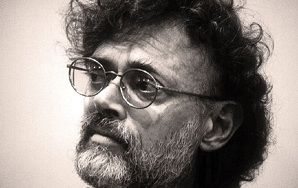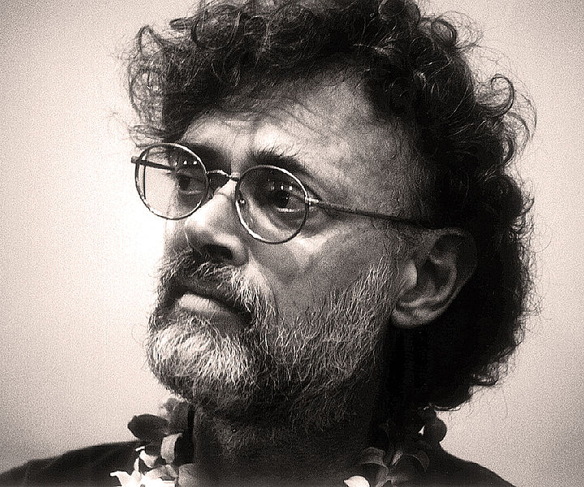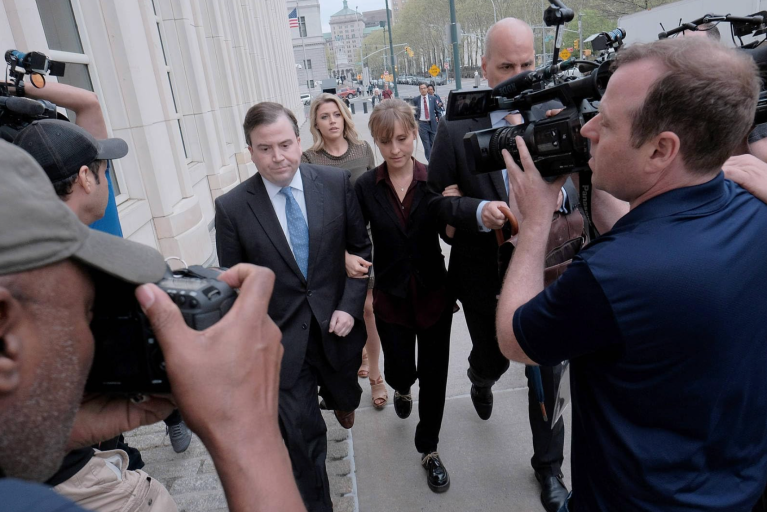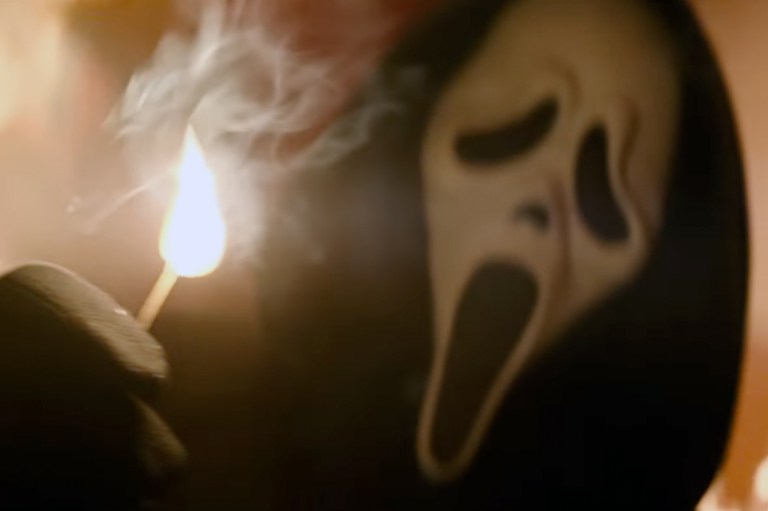
16 Quotes From Terence McKenna
[Sand dunes] bear a resemblance to the force that created them, wind. It is as if each grain of sand were a bit inside the memory of a natural computer.
By Tao Lin

from [mostly talks, I think]:
You have to take seriously the notion that understanding the universe is your responsibility, because the only understanding of the universe that will be useful to you is your own understanding.
*
My technique is don’t believe anything. If you believe in something, you are automatically precluded from believing its opposite.
*
I often like to think that our map of the world is wrong, that where we have centered physics, we should actually place literature as the central metaphor that we want to work out from. Because I think literature occupies the same relationship to life that life occupies to death. A book is life with one dimension pulled out of it. And life is something that lacks a dimension which death will give it. I imagine death to be a kind of release into the imagination in the sense that for characters in a book, what we experience is an unimaginable dimension of freedom.
*
Culture replaces authentic feeling with words. As an example of this, imagine an infant lying in its cradle, and the window is open, and into the room comes something, marvelous, mysterious, glittering, shedding light of many colors, movement, sound, a transformative hierophany of integrated perception and the child is enthralled and then the mother comes into the room and she says to the child, “that’s a bird, baby, that’s a bird,” instantly the complex wave of the angel peacock iridescent trans-formative mystery is collapsed, into the word. All mystery is gone, the child learns this is a bird, this is a bird, and by the time we’re five or six years old all the mystery of reality has been carefully tiled over with words. This is a bird, this is a house, this is the sky, and we seal ourselves in within a linguistic shell of dis-empowered perception.
from The World Could Be Anything (1990)
All our previous positions are now exposed as absurd. But people don’t draw the obvious conclusion: it must also mean then that our present situation is absurd.
*
The mode of communication of [octopi]: they become their linguistic intent. This repertoire of blushes, dots, stripes, traveling fields, color changes. And, then, because they are soft-bodied they can quickly reveal and conceal all parts of their body very quickly. So if you watch an octopus in communication its surface texture is changing, its color is changing, and it is hiding, and revealing—it’s dancing, and it’s a dance of pure meaning, perceived visually by the object of its intention, which is other octopi.
So, compare this for a moment to our method of communication. We use rapidly modulated small mouth noises. As primates we have incredible ability to make small mouth noises. We can do this for up to six hours at a stretch without tiring. No other thing we can do approaches the level of variation with low energy investment that the small mouth noises do. A person using a deaf-and-dumb language is exhausted after forty-five minutes. But a problem with the small mouth noises mode of communication is: I have a thought, I look in a dictionary that I have created out of my life experience, I map the thought onto the dictionary, I make the requisite small mouth noises, they cross physical space, they enter your ear, you look in your dictionary, which is different from my dictionary, but if we speak what we call ‘the same language’ it will be close enough that you will ‘sort of’ understand what I mean. Now if I don’t say to you, ‘what do I mean?’ you and I will go gaily off in the assumption that we understand each other.
But if I say to you “do you understand what I meant then” you say “yes, you meant that you don’t want to sit with Harry and Sally because their pending divorce makes you uncom”—I say “no, that’s not that I meant: I meant—” So there’s misunderstanding because the dictionaries are not matched. Now notice what’s happening with the octopi. There is no dictionary. Both parties are seeing the same thing because my body is my meaning. I become my meaning. And you behold the meaning I have become. I am like a naked thought. Not even a naked nervous-system. More naked than that. I am a naked thought, in aqueous space, unfolding in time. I maintain this is why octopi eject clouds of ink: it’s so they can have private thoughts. Because if you can be seen you can be understood. Well this is a perfect model, condoned by nature, for the kind of transformation we want to lead our culture toward.
And I don’t think it’s that outlandish. Our previous animal totems were chosen unconsciously and were rather unfortunate, I think: I take the totem of the 19th century to be, um, the horse, expressed as the steam engine. And the totemic animal of the 20th century is the raptor, the bird of prey, expressed as supersonic fighter aircraft, which is just, you know, the leanest, meanest machine you can get together these days. But these mammalian and avian images are too close to the rapacious heart of the primate inside us; embracing an image of the soul like that of the octopi is permission for a strange and alien kind of beauty to be let into our lives.
*
Someone said language was invented to lie; well, in a way, that’s true, because of the problem of noncommunication. As soon as you have something to communicate there’re places where you don’t want the message to go, so this creates a very interesting problem. If I were twenty years old I would go into marine biology just to spend some time with [octopi].
from “A talk given at the invitation of Ruth and Arthur Young of the Berkeley Institute for the Study of Consciousness” (1984) collected in The Archaic Revival (1991)
We are not primarily biological, with mind emerging as a kind of iridescence, a kind of epiphenomenon at the higher levels of organization of biology. We are hyperspatial objects of some sort that cast a shadow onto matter. The shadow in matter is our physical organism.
At death, the thing that casts the shadow withdraws, and metabolism ceases. Material form breaks down; it ceases to be a dissipative structure in a very localized area, sustained against entropy by cycling material in, extracting energy, and expelling waste. But the form that ordered it is not affected. These declarative statements are made from the point of view of the shamanic tradition, which touches all higher religions. Both the psychedelic dream state and the waking psychedelic state acquire great import because they reveal to life a task: to become familiar with this dimension that is causing being, in order to be familiar with it at the moment of passing from life.
The metaphor of a vehicle—an after-death vehicle, an astral body—is used by several traditions. Shamanism and certain yogas, including Taoist yoga, claim very clearly that the purpose of life is to familiarize oneself with this after-death body so that the act of dying will not create confusion in the pysche.
*
History is the shock wave of eschatology. In other words, we are living in a very unique moment, ten or twenty thousand years long, where an immense transition is happening. The object at the end of and beyond history is the human species fused into eternal tantric union with the superconducting Overmind/UFO. It is that mystery that casts its shadow back through time. All religion, all philosophy, all wars, pogroms, and persecution happen because people do not get the message right. There is both the forward-flowing casuistry of being, causal determinism, and the interference pattern that is formed against that by the backward-flowing fact of this eschatological hyperobject throwing its shadow across the temporal landscape. We exist, yet there is a great deal of noise. This situation called history is totally unique; it will last only for a moment, it began a moment ago. In that moment there is a tremendous burst of static as the monkey goes to godhood,as the final eschatological object mitigates and transforms the forward flow of entropic circumstance.
*
What is happening to our world is ingression of novelty toward what [Alfred North Whitehead] called “concrescence,” a tightening gyre. Everything is flowing together. The “autopoetic lapis,” the alchemical stone at the end of time, coalesces when everything flows together. When the laws of physics are obviated, the universe disappears, and what is left is the tightly bound plenum, the monad, able to express itself for itself, rather than only able to cast a shadow into physis as its reflection. […] It will be the entry of our species into hyperspace, but it will appear to be the end of physical laws accompanied by the release of the mind into the imagination. […] As one closes distance with the eschatological object, the reflections it is throwing off resemble more and more the thing itself. In the final moment the Unspeakable stands revealed. There are no more reflections of the Mystery. The Mystery in all its nakedness is seen, and nothing else exists.
from Trialogues at the Edge of the West (1992)
When I look at human history, I see the accumulation of a sense of urgency long before anyone started worrying about ecocide or population. It’s almost as though the world soul is the thing that wants to live and, sensing instability, it is trying to build a lifeboat out of the clumsy material of protoplasm. The world soul may actually sense the finite life of the sun, and it may be trying to build a lifeboat for itself to cross to another star. How in the world can you cross to another star when the only material available is protoplasm? Well, it may take fifty million years, but there are strategies. They have to do with genetic languages, and with developing a creature who deals with matter through abstraction and analysis, eventually creating technology. This is all an enzymatically mediated process, a plan in the mind of the world soul to survive.
…why this increasing urgency, century after century? For fifteen thousand years, there has been increasing anxiety and the following of increasingly irrational chreodes. Only if there is a problem with the stability of the environment do the last ten thousand years of human history make any sense. This problem has created history as an evacuation, a frantic project to find a way out. That’s why things have been allowed to tear loose, to poison the oceans, to strip the continents. The world soul, I think, is in communication with us in the culminating moment of human history. Everything is being scripted for a purpose, and toward an end unglimpsed by us but tied up with the survival of everything.
from True Hallucinations (1992)
[Sand dunes] bear a resemblance to the force that created them, wind. It is as if each grain of sand were a bit inside the memory of a natural computer. The wind is the input that arranges the grains of sand so that they beam a lower-dimensional template of a higher-dimensional phenomenon, in this case the wind. There is nothing magical about this, and it does not seem mysterious to us: wind, a pressure that is variable in space. In my thinking, the genes of organisms are grains of sand arranged by the ebb and flow of the winds of time. Naturally, then, organisms bear the imprint of the inherent variables in the temporal medium in which they arose. DNA is the blank slate upon which the changing temporal variables have had their sequin and relative differences recorded. Any technique that saw into the energetic relationships within a living organism, such as yoga or the use of psychedelic plants, would also give a deep insight concerning the variable nature of time.
from Evolving Times (1995)
The way in which [the internet] will dissolve boundaries is by making us transparent. To each other. I mean, I can imagine a child of the future, we all bring home our drawings to stick on refrigerators, and things like that—in the future we won’t stick them on refrigerators, we will stick them in our website. And everything will go into our website. And by the time we’re 25, or something, our website will be the size of the American Museum of Natural History. And you can wander through it. And as a gesture of intimacy you can invite someone else to wander through it. Well that’s who you are—it’s your imagination. And, I think, in a sense, I’ve said, at times, that: The cultural enterprise is an effort to turn ourselves inside out. We want to put the body into the imagination, and we want the imagination to replace the laws of physics. With these technologies we can probably do that. But it’ll have to run on psychedelic design principles, or it’s certain to be a mess.
from True Conversations with Terence McKenna (1999)
“I’ll try to be around and about. But if I’m not, then you know that I’m behind your eyelids, and I’ll meet you there.”
from The Last Interview (1999)
I always thought death would come on the freeway in a few horrifying moments, so you’d have no time to sort it out. Having months and months to look at it and think about it and talk to people and hear what they have to say, it’s a kind of blessing. It’s certainly an opportunity to grow up and get a grip and sort it all out. Just being told by an unsmiling guy in a white coat that you’re going to be dead in four months definitely turns on the lights. […] It makes life rich and poignant. When it first happened, and I got these diagnoses, I could see the light of eternity, a la William Blake, shining through every leaf. I mean, a bug walking across the ground moved me to tears.
*
When I think about dying, the thing that surprises me is how much of the future I regard as history, and how I don’t want to miss it. I want to know how it all comes out. I haven’t a lot of money riding on my vision of things, but I would like to know how the universe came to be, what’s up with extraterrestrials, where biotech is going, where the Internet is going, about robot/man space-flight to the outer planets. Because the next century will be it. We are on the brink of a posthuman existence, or we are into the early phase of the posthuman existence. So what’s it gonna look like? What’s it gonna feel like?
This post is part of Tao Lin Day. To read more posts in this series, click here.











